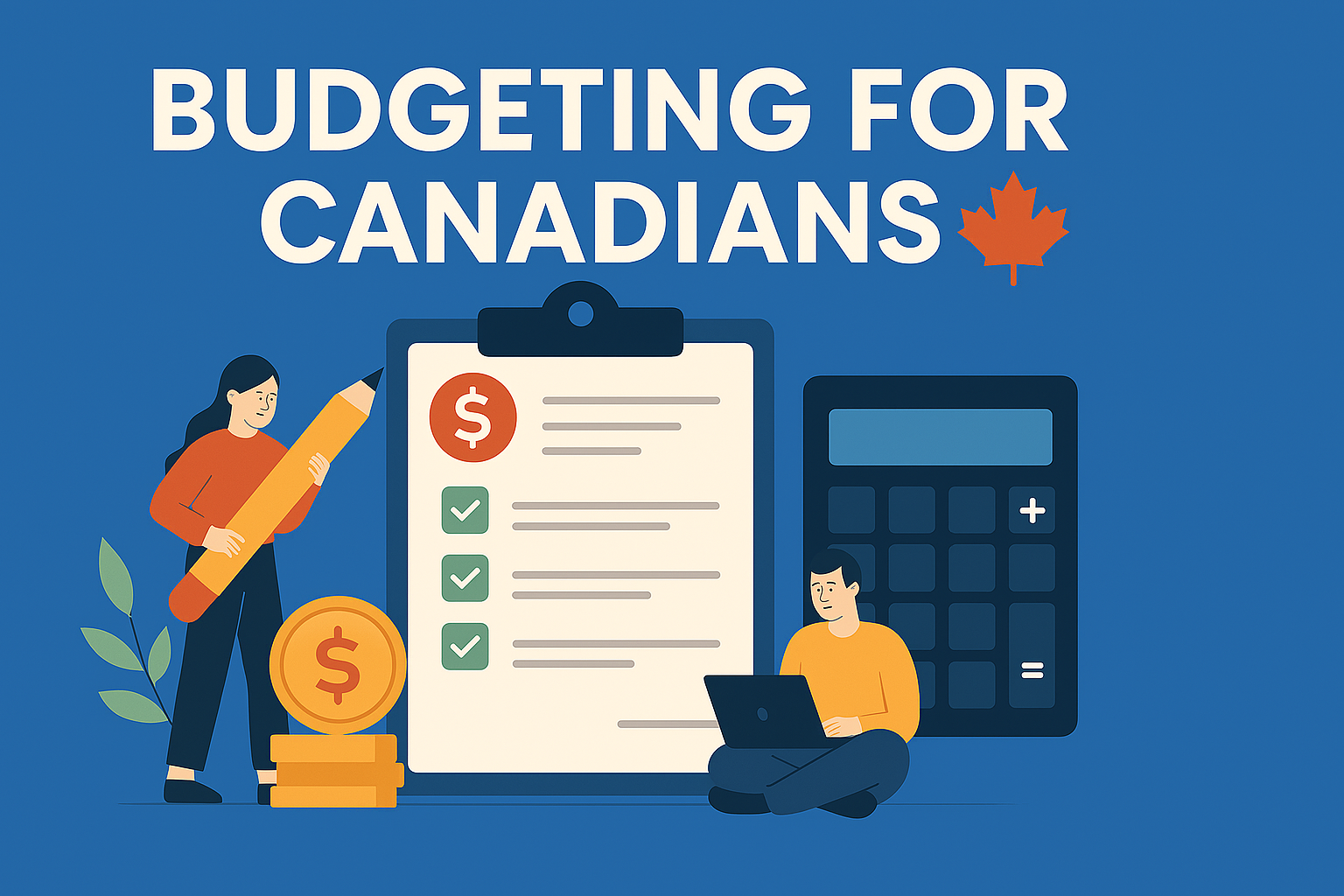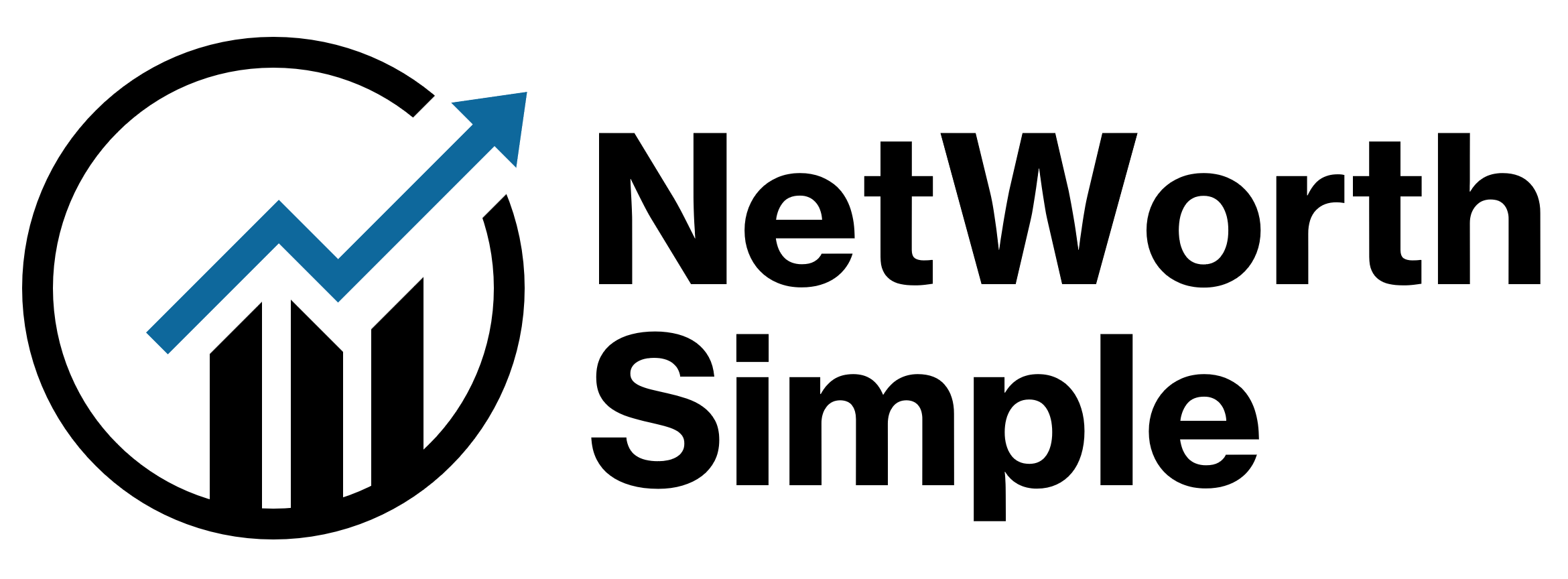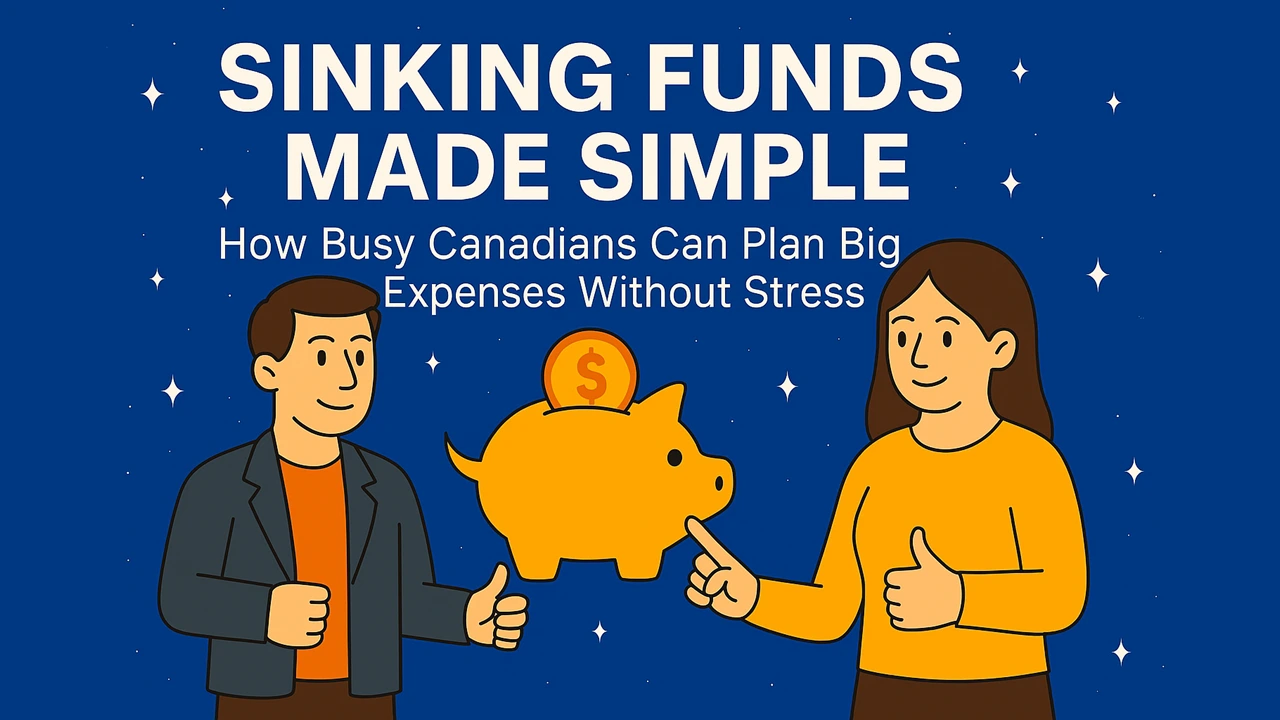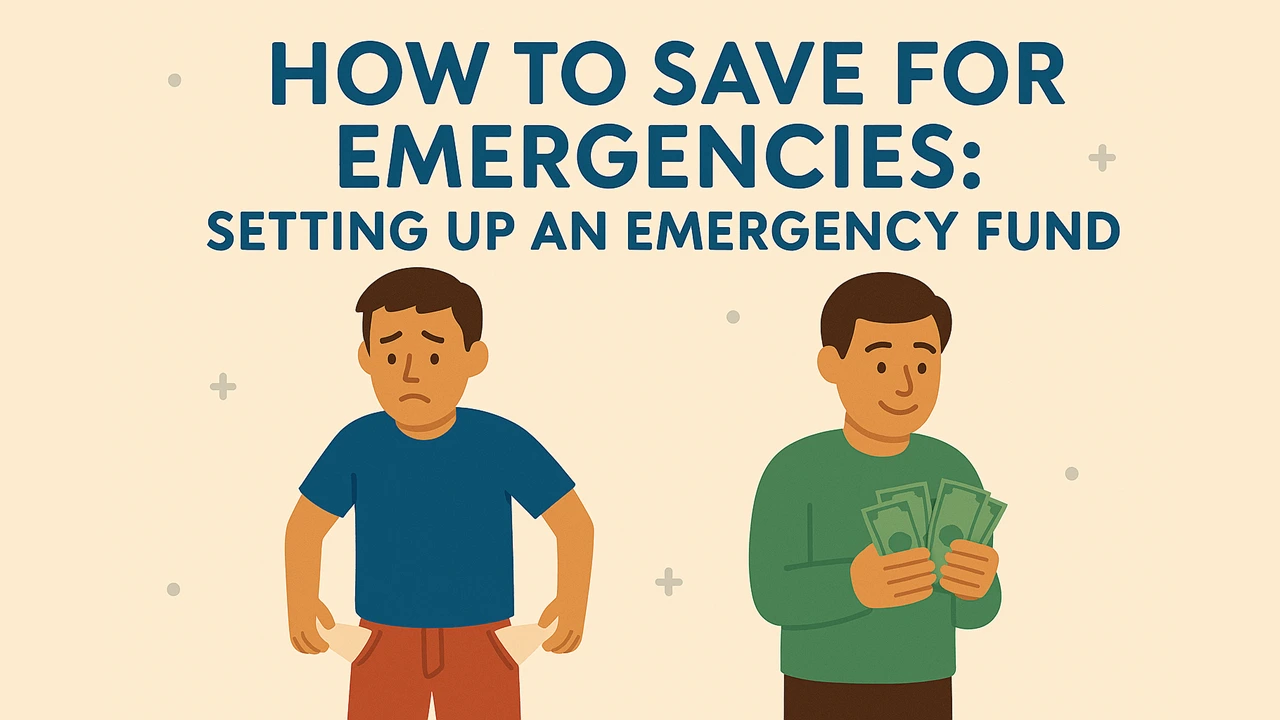Budgeting for Canadians: A Simple Guide to Managing Your Money

Feel like your money disappears before the month ends? A budget gives you control over your day-to-day spending — without cutting all the fun. This guide shows you how to build a simple, realistic budget tailored to Canadian life.
Let’s get started and make your money work for you.
Budgeting Basics for Canadians
Before choosing a budgeting method or downloading an app, it’s important to understand the fundamentals.
💡 Pro Tip
Want to learn more about the basics of personal finance?
📖 Read our personal finance beginner guide.
A strong financial foundation starts with a clear understanding of what a budget is, why so many fail, and how to properly account for different types of expenses — especially within the Canadian cost-of-living context.
What is a Budget, Really?
A budget is a financial plan that helps you allocate your income toward essential expenses, savings, and discretionary spending. It allows you to make informed decisions with your money, rather than reacting after it’s already spent.
In practical terms, a good budget:
- Accounts for all sources of income
- Lists fixed and variable expenses
- Sets realistic spending limits and financial goals
A budget doesn’t need to be complex. What matters most is that it’s clear, consistent, and aligned with your actual lifestyle.
Why Most Budgets Fail (and How to Avoid That)
Many Canadians start a budget with good intentions, only to abandon it within weeks. Common reasons include:
- Overly strict or unrealistic spending limits
- Failure to plan for irregular or seasonal expenses
- Lack of ongoing tracking or periodic adjustments
To avoid these pitfalls:
- Keep your budget flexible, especially during variable income months
- Include a buffer for unexpected costs
- Review and adjust your plan regularly — budgeting is not a “set it and forget it” system
Successful budgeting comes down to consistency, adaptability, and honest tracking.
Fixed vs. Variable Expenses in a Canadian Context
A critical step in creating a functional budget is distinguishing between fixed and variable expenses.
Fixed Expenses (Stable Month to Month):
- Rent or mortgage payments
- Insurance premiums
- Internet and phone bills
- Loan or car payments
Variable Expenses (Fluctuate Monthly):
- Groceries
- Utilities (e.g., hydro and heating)
- Transportation costs
- Dining out, entertainment, and shopping
In Canada, variable costs are often influenced by seasonal changes, such as increased heating costs in winter or higher travel spending during holidays. These fluctuations highlight the importance of budget flexibility and planning for occasional expenses.
A thorough review of your past 3–6 months of bank statements can help you accurately categorize and estimate your average monthly spending.
Key Takeaways
- A budget is a structured plan for managing income and expenses with purpose.
- Most budgets fail due to rigidity or lack of realistic expectations.
- Fixed and variable expenses must be clearly defined and adjusted for Canada’s seasonal cost shifts.
How to Build a Canadian Budget
Creating a budget may seem intimidating at first, but the process becomes straightforward once it’s broken down into manageable steps.
Whether you’re trying to get out of debt, save for a home, or simply regain control over your day-to-day spending, the steps below will help you build a budget tailored to your Canadian lifestyle and financial goals.
Step 1: Calculate Your After-Tax Income
Begin with a clear understanding of how much money you actually take home each month — not your gross salary.
Include:
- Employment income after tax and deductions
- Government benefits (e.g., Canada Child Benefit, GST/HST credit)
- Side income, freelance work, or rental income
- Any other regular transfers (e.g., support payments)
💡 Pro Tip
If your income varies month-to-month, calculate a 3–6 month average to use as your baseline.
Step 2: Track and Categorize Your Spending
Next, assess where your money is currently going. Review your last 2–3 months of transactions from bank accounts and credit cards to identify patterns.
Sort your expenses into categories, such as:
- Housing (rent, utilities, property tax)
- Transportation (gas, insurance, transit)
- Groceries and household items
- Debt payments
- Subscriptions and memberships
- Savings and investments
- Discretionary spending (restaurants, shopping, entertainment)
This step is critical for spotting areas of overspending and opportunities to cut back.
Step 3: Set Monthly Spending Limits and Financial Goals
Once you understand your income and spending patterns, assign spending limits to each category based on your priorities and goals.
Start with needs first — housing, food, transportation — then allocate funds to savings and debt, followed by discretionary spending.
Examples of common budgeting goals:
- Save $500/month toward a home down payment
- Pay off $3,000 in credit card debt over 6 months
- Build a 3-month emergency fund by year-end
Be realistic. Your budget should challenge you, but it should also be sustainable.
Summary Checklist
Use this checklist to confirm your budget is built on solid ground:
- ✅ Budget allows for flexibility and periodic review
- ✅ Income is calculated after tax and includes all sources
- ✅ Past expenses have been reviewed and categorized
- ✅ Each category has a spending limit that fits your goals
- ✅ Seasonal or irregular expenses have been considered
Popular Budgeting Methods
There is no one-size-fits-all approach to budgeting. The best method is the one that fits your lifestyle, personality, and financial goals. Below are three of the most widely used budgeting systems — all effective, but each with a different structure and mindset.
Understanding how these methods work can help you choose the one that feels most intuitive and sustainable.
Zero-Based Budgeting
How it works:
With zero-based budgeting, you assign every dollar of your income a specific purpose — until there’s nothing left “unallocated.” That includes spending, saving, debt payments, and even fun money. Your income minus your expenses must equal zero.
Why it works:
- Promotes complete financial awareness
- Encourages intentional spending and proactive saving
- Ideal for people who want detailed control
Challenges:
- Can feel time-consuming
- Requires frequent updates and expense tracking
Best for:
Canadians with regular income who want to optimize every dollar — especially helpful for debt repayment and strict savings goals.
The 50/30/20 Rule
How it works:
This method divides your after-tax income into three broad categories:
- 50% for Needs (rent, groceries, transportation)
- 30% for Wants (entertainment, dining out, travel)
- 20% for Savings and Debt Repayment
Why it works:
- Simple to understand and easy to maintain
- Encourages balance between living for today and planning for tomorrow
Challenges:
- May oversimplify complex budgets
- Not ideal if your expenses don’t fit neatly into these categories (e.g., high housing costs)
Best for:
New budgeters or anyone looking for a straightforward budgeting framework with flexibility built in.
Envelope (Cash-Only) Budgeting
How it works:
You divide your monthly income into physical envelopes (or digital equivalents) labeled for each spending category. Once an envelope is empty, spending in that category stops until the next month.
Why it works:
- Enforces discipline and spending limits
- Helps avoid overspending, especially with discretionary expenses
Challenges:
- Inconvenient in a mostly cashless society
- May not work well for automated payments or online shopping
Best for:
People who struggle with impulse spending or want a more tactile, visual way to manage money. Digital “envelope” tools like You Need a Budget (YNAB) can modernize this method.
How to Choose the Right Method
- If you want maximum control and don’t mind details → Zero-Based
- If you want simplicity and structure → 50/30/20 Rule
- If you want discipline and visual cues → Envelope Budgeting
Remember: your budgeting method can evolve. Try one, adjust as needed, and don’t hesitate to combine features from multiple approaches.
Best Budgeting Tools and Apps for Canadians
While a budgeting method gives you structure, the right tool makes the process easier to manage day-to-day. Whether you prefer spreadsheets, mobile apps, or pen and paper, the key is to choose a system that helps you stay consistent.
This section highlights tools that are widely used in Canada, including free options, automated apps, and customizable templates.
Budgeting with Spreadsheets (Simple and Flexible)
Spreadsheets remain one of the most effective budgeting tools, especially for people who like full control over their numbers.
Pros:
- 100% customizable to your income, expenses, and goals
- Great visibility across months and categories
- No account linking required (good for privacy)
Free options:
- Google Sheets budgeting templates
- Excel pre-built budgets
- Downloadable NetWorth Simple budgeting templates (coming soon)
Best for:
People who are comfortable with numbers and want a low-cost, no-frills solution.
Best Budgeting Apps for Canadians
Budgeting apps offer convenience, automation, and mobile access — features that are especially helpful if you’re busy or prefer not to build your own system.
1. You Need a Budget (YNAB)
- Based on zero-based budgeting principles
- Customizable categories and goal tracking
- Syncs with most major Canadian banks
- Offers educational content and strong community support
- Subscription: ~$99/year after a 34-day free trial
Best for:
Hands-on budgeters who want full control and a proven method for long-term financial success.
2. PocketSmith
- Visual calendar-based budgeting
- Forecasts future cash flow based on your spending habits
- Supports multi-currency and account syncing (many Canadian banks supported)
- Paid plans with limited free version available
Best for:
Canadians who want to project their finances into the future and manage multiple income sources or complex budgets.
3. KOHO (App + Prepaid Card)
- Prepaid Visa card with built-in budgeting and real-time spending tracking
- Round-up savings, cash back, and credit building features
- No credit checks or hidden fees
- App includes visual spending insights and savings goals
Best for:
People who want a combined spending account, rewards, and budgeting in one place — especially for daily spending control.
4. Spendee
- Easy-to-use app with attractive visuals and shared wallets
- Manual or bank-linked expense tracking
- Works well for household or couple budgets
- Supports Canadian currencies and international banks
Best for:
Couples or families looking for a user-friendly, visually engaging budgeting app.
5. Goodbudget
- Digital envelope budgeting system (manual entry)
- No bank connection required — privacy-focused
- Web and mobile access with sync between devices
- Free and Plus ($8/month) versions
Best for:
Fans of the envelope method who prefer a simple, no-frills interface and full control over their data.
Choosing the Right App
When selecting a budgeting app, consider:
- Whether you prefer automation or manual control
- Your comfort level with syncing bank accounts
- If you need features for couples, families, or shared budgets
- How detailed you want your spending and forecasting reports
The most effective app is the one you’ll use consistently — even if it’s not the most feature-rich.
Use the following table to find the app that’s best for you:
|
App Name |
Key Features |
Best For |
Cost |
|---|---|---|---|
|
You Need a Budget (YNAB) |
Zero-based budgeting, banc sync, goal tracking, education |
Hands-on budgeters wanting detailed control |
~$99/year (after free trial) |
|
PocketSmith |
Cash flow forecasting, multi-currency support, bank sync |
Canadians needing future financial projections |
Free limited, paid plans start at ~$9/month |
|
Koho |
Prepaid card, round-up savings, cash back, real-time tracking |
Daily spending control with rewards |
Free |
|
Spendee |
Shared wallets, manual/bank-linked tracking, visual insights |
Couples/families wanting user-friendly interface |
Free, premium available |
|
Goodbudget |
Digital envelope system, manual entry, privacy-focused |
Envelope budgeting fans preferring manual control |
Free and Plus ($8/month) |
Pen and Paper vs. Digital — What Matters More Than the Tool
Some people prefer writing things down. A notebook or printable budgeting sheet can be just as effective — and sometimes more memorable — than a digital tool.
Pros:
- Zero distractions or notifications
- Makes you think consciously about each entry
- No tech or internet required
Best for: Visual learners and those who prefer a quiet, manual budgeting process.
Choosing the Right Tool
When selecting a budgeting tool, consider:
- Your comfort with technology
- How much automation you want
- Your preferred budgeting method
- Whether you want mobile access or desktop-only
The best tool is the one you’ll actually use consistently — not the one with the most features.
Real-Life Budgeting Scenarios
Budgeting looks different for everyone, especially in Canada where lifestyles and incomes vary widely. The key is to adapt your budget to fit your unique situation. Below are common real-world scenarios and practical tips to help you budget effectively no matter your circumstances.
Budgeting on a Low or Variable Income
If your income fluctuates month to month—whether due to freelancing, commissions, seasonal work, or gig economy jobs—creating a reliable budget can be challenging but not impossible.
Strategies:
- Calculate a 3–6 month average income to estimate a baseline.
- Prioritize fixed essential expenses first (housing, utilities, groceries).
- Build a larger emergency fund to cover income gaps.
- Use sinking funds to save monthly for irregular expenses.
- Adjust discretionary spending dynamically based on your income each month.
💡 Pro Tip
Want to learn more about saving for expected lump-sum bills using sinking funds?
📖 Learn more with article on sinking funds.
Budgeting for Couples or Families
Managing money with a partner or family requires communication and coordination.
Strategies:
- Create a shared budget that covers household expenses and individual spending.
- Use budgeting tools that support multiple users or shared wallets (e.g., Spendee, Goodbudget).
- Set joint financial goals—like saving for a home or education—and track progress together.
- Allocate personal “fun money” for each individual to avoid resentment.
- Review the budget regularly as a team, especially after life changes (new baby, job change).
What to Do When You Keep Going Over Budget
Overspending happens, even to the most disciplined budgeters. The important part is how you respond.
Strategies:
- Identify which categories are consistently over budget—groceries, dining out, or subscriptions?
- Look for patterns or triggers, like emotional spending or unexpected bills.
- Adjust your budget to make it more realistic; a budget that’s too strict isn’t sustainable.
- Consider cutting non-essential expenses temporarily to rebalance.
- Use tracking apps or manual journaling to increase awareness of spending habits.
- Celebrate small wins to stay motivated.
Tips for Real-Life Budgeting Success
- Be flexible and revisit your budget regularly.
- Build buffers for irregular or seasonal expenses (→ sinking funds).
- Communicate openly if budgeting involves others.
- Use tools and methods that suit your lifestyle.
- Don’t be discouraged by setbacks—adjust and keep going.
Budgeting Tips for Canadians
Budgeting in Canada comes with unique challenges and opportunities. Understanding these factors will help you create a more accurate and realistic financial plan tailored to your life here.
Handling Seasonal Expenses (Winter, Holidays, Back-to-School)
Canadian households often face seasonal spikes in expenses that can disrupt monthly budgets:
- Winter heating bills: Hydro, natural gas, and heating oil costs can increase significantly during cold months.
- Seasonal clothing and gear: Winter boots, jackets, snow tires, and other essentials.
- Holiday spending: Gifts, travel, and celebrations during Christmas, Thanksgiving, and other holidays.
- Back-to-school costs: Supplies, clothing, and extracurricular fees in late summer/fall.
Budgeting tip: Use sinking funds—set aside a small amount monthly toward these predictable expenses instead of facing large lump sums.
Managing Bills Like Property Tax, Hydro, Insurance
Certain expenses may be specific or more significant in Canada:
- Property taxes: Depending on your province or municipality, these can be large annual or quarterly payments.
- Hydro and utility costs: Rates and billing cycles vary widely across provinces.
- Public transit passes: Many Canadians rely on monthly transit cards, which should be factored into budgets.
- Healthcare expenses: While basic healthcare is covered, costs like dental, prescription drugs, and vision care may require budgeting or insurance.
Budgeting for Government Benefits and Tax Credits
Canada offers a variety of government programs that impact your monthly cash flow:
- Canada Child Benefit (CCB): Monthly payments for families with children.
- GST/HST Credit: Quarterly payments for low- and moderate-income individuals and families.
- Provincial tax credits and rebates: Programs vary by province and can include energy rebates, property tax credits, and more.
Budgeting tip: Factor these benefits into your income calculations but avoid relying on them for essential expenses due to their variability.
Preparing for Unexpected Expenses
Even with careful planning, unexpected costs occur—car repairs, medical bills, or home maintenance. Building an emergency fund of 3–6 months’ worth of essential expenses is crucial to protect your financial stability.
Key Takeaways for Canadian Budgets
- Anticipate and plan for seasonal expense fluctuations.
- Understand and budget for region-specific bills and taxes.
- Incorporate government benefits thoughtfully into your income.
- Maintain an emergency fund to handle surprises.
What To Do After You Start Budgeting
Starting a budget is just the beginning. To make your budgeting efforts sustainable and effective, it’s crucial to understand how to maintain, adjust, and leverage your budget over time.
Adjusting and Updating Your Budget
Your financial situation and priorities will evolve — changes in income, expenses, or life events require regular budget reviews.
- Review your budget monthly or quarterly to track progress and make necessary adjustments.
- Update your spending limits based on actual results, upcoming expenses, or changes in financial goals.
- Use budgeting as a flexible tool, not a rigid set of rules.
What to Do With Surplus (Emergency Fund? Debt? Invest?)
If your budget results in leftover funds each month, it’s important to allocate these wisely.
Consider:
- Building or boosting an emergency fund for unexpected costs.
- Accelerating debt repayment, especially high-interest debt.
- Increasing contributions to savings or investment accounts (RRSP, TFSA).
- Setting money aside in sinking funds for future planned expenses.
💡 Pro Tip
Want to learn how to build an emergency fund for unexpected expenses?
📖 Learn more with article on emergency funds.
Linking Budgeting to Your Bigger Financial Goals
Budgeting is the foundation for achieving broader financial objectives — from buying a home to planning retirement.
- Use your budget to track progress toward goals like saving for a down payment or paying off debt.
- Adjust your budget periodically to reflect changing priorities.
- Consider budgeting as part of your overall personal finance strategy, alongside investing and insurance planning.
💡 Pro Tip
Curious how you can grow your wealth by investing your money?
📖 Read our beginner guide on investing.
Summary: Budgeting is a Continuous Process
- A budget should evolve with your financial life.
- Regular reviews help maintain accuracy and motivation.
- Wise use of surplus funds accelerates financial stability.
- Budgeting supports your long-term financial success.
Conclusion
Budgeting is one of the most powerful tools Canadians have to achieve financial stability, reduce stress, and reach long-term goals. While it requires time and consistency, a well-structured budget tailored to your life makes managing money more straightforward and empowering.
Remember:
- 💡 Start with clear, realistic budgeting basics.
- 🧩 Choose a method and tools that fit your lifestyle.
- 🔄 Adapt your budget as your circumstances change.
- 🍁 Plan for seasonal and unexpected expenses common in Canada.
By following these principles, you’re not just tracking numbers — you’re building a foundation for financial confidence and long-term success.


